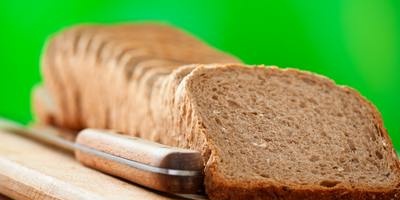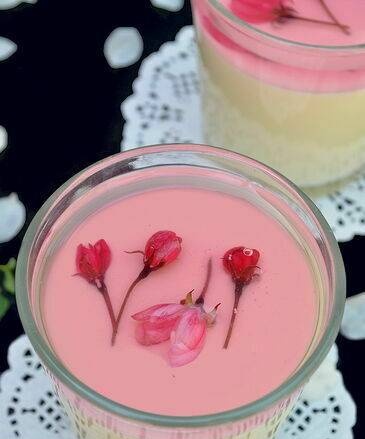|
 You can't do without such a necessary thing as a cutting board in the kitchen. As a rule, there are several of them: for meat, fish, boiled foods, bread, vegetables. Some housewives use one such board for raw food, another for boiled food, and cut bread on the back. You can't do without such a necessary thing as a cutting board in the kitchen. As a rule, there are several of them: for meat, fish, boiled foods, bread, vegetables. Some housewives use one such board for raw food, another for boiled food, and cut bread on the back.
This kind of economy doesn't pay off - microbes of pathogenic cultures enter the body with food.
 There are a number of quite modern options for quickly and economically distributing the efforts for cutting and cutting: for example, well-washed greens just before dressing in salads can be quickly cut into prepared dishes with stainless steel scissors. Fresh vegetables are easier to grind on plastic - then the juice is not absorbed, or with a blender that is part of any food processor. There are a number of quite modern options for quickly and economically distributing the efforts for cutting and cutting: for example, well-washed greens just before dressing in salads can be quickly cut into prepared dishes with stainless steel scissors. Fresh vegetables are easier to grind on plastic - then the juice is not absorbed, or with a blender that is part of any food processor.
If classic cutting boards are used, then decorative ones should be immediately excluded from their number, since wood for varnishing applied on top of a colorful pattern is pickled in order to prevent cracks.
Smoothly planed and unpainted boards should be used for cutting food. To prevent microorganisms from raw meat or fish (the protein medium is most suitable for the development of negative flora), packages of sausage products do not get on boiled products, it is desirable to have boards of different shapes and store them separately from one another.
How to properly process their work surfaces?
An interesting biochemical study carried out by the Brussels Institute of Hygiene on the percentage of microbes in the surface environment on wood, plastic and other materials used for cutting and cutting. The smallest presence of microbes was found on the metal surface. Their greatest presence is on wood and porous surfaces.
 Boiling cutting boards, scraping with a knife, and washing with a sponge and detergent does not guarantee absolute cleanliness and germ removal. Staphylococcus aureus survives at 120 degrees, while some other forms of microorganisms die. During the study, samples were taken from the surface of a metal tray after its sanitization. First - mechanical removal with a brush with detergent, then - rinsing with a strong jet of water (heated to 80 degrees). However, 12 percent of viable microbes have been identified as negatively affecting human intestinal flora. Boiling cutting boards, scraping with a knife, and washing with a sponge and detergent does not guarantee absolute cleanliness and germ removal. Staphylococcus aureus survives at 120 degrees, while some other forms of microorganisms die. During the study, samples were taken from the surface of a metal tray after its sanitization. First - mechanical removal with a brush with detergent, then - rinsing with a strong jet of water (heated to 80 degrees). However, 12 percent of viable microbes have been identified as negatively affecting human intestinal flora.
What means can resist uninvited tenants and be harmless to humans? At the first stage of processing a wooden surface that absorbs odors, wine must be used vinegar... The amount of wine vinegar is 40 ml per liter of water. The solution temperature is at least 80 degrees.
The process is completed with ordinary baking soda (sodium bicarbonate). The whole subtlety is that soda is applied on a slightly damp board in the form of a dry powder, then it is evenly spread over the board so that there are no empty spaces. The thickness of the baking soda layer must be at least 2 mm. In this form, the board is left for 14 hours, after which the soda (it is no longer suitable for reuse!) Is removed with a clean dry cloth, and the board is scalded with boiling water and dried. When processing cutting board in this way 99.5 percent of all microbes die.
Karlova Anna Sergeevn
|
 You can't do without such a necessary thing as a cutting board in the kitchen. As a rule, there are several of them: for meat, fish, boiled foods, bread, vegetables. Some housewives use one such board for raw food, another for boiled food, and cut bread on the back.
You can't do without such a necessary thing as a cutting board in the kitchen. As a rule, there are several of them: for meat, fish, boiled foods, bread, vegetables. Some housewives use one such board for raw food, another for boiled food, and cut bread on the back. There are a number of quite modern options for quickly and economically distributing the efforts for cutting and cutting: for example, well-washed greens just before dressing in salads can be quickly cut into prepared dishes with stainless steel scissors. Fresh vegetables are easier to grind on plastic - then the juice is not absorbed, or with a blender that is part of any food processor.
There are a number of quite modern options for quickly and economically distributing the efforts for cutting and cutting: for example, well-washed greens just before dressing in salads can be quickly cut into prepared dishes with stainless steel scissors. Fresh vegetables are easier to grind on plastic - then the juice is not absorbed, or with a blender that is part of any food processor.



